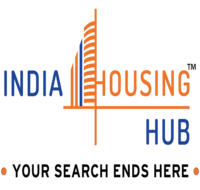AFFORDABLE HOUSING IN INDIA
Affordable housing is a term coined to refer to the houses which are within the budget of those who come below the average household income. In India, these blocks are reserved for low income people, middle income people and economically weaker sections in urban areas.
High property prices prevailing in the market is the key hindrance. This evokes the thought that affordable housing in both rural and urban housing sector needs differently tailored policies.
Need for the promotion of affordable housing in India
Economic development in our country is characterized by high demand for better housing facilities, leading to a huge gap between the demand for houses and its availability as per the Report of the Technical Group on Estimation of Urban Housing Shortage (2012).
Looking at the Technical Group Report, 96 percent of economically weaker sections (EWS) and low-income groups (LIG) suffered from housing shortage. Thereby strongly indicating at the urgency of the need to expand housing facilities.
In order to estimate affordable housing needs to cover the housing shortage, the calculation is done by (Planning Commission methodology) by adding:
- Excess of households over housing stock,
- The number of households residing in unacceptable dwelling units due to overcapacity and congestion factor
- The homeless.
Initiatives for affordable housing
Identifying the problem, the government has initiated a group of measures over the last fifteen years.
Two components under Pradhan Mantri Awas Yojana – the PMAY (Urban) and PMAY (Rural) were launched by the government for achieving housing for all by target year 2022.
PMAY (Urban): affordable housing for the urban poor
For the urban poor, the government’s target is to construct 20 million houses by March 31, 2022 under PMAY (Urban) that was launched in June 2015.
The scheme gives financial assistance to States/Union Territories (UTs) in order to support housing requirements of three identified income categories: Economically Weaker Sections (EWS), Lower Income Group (LIG) and Middle-Income Group (MIG) in urban areas.
According to the Ministry of Housing and Urban Affairs, by January 2019, nearly 69 lakh houses were approved while13.59 lakh of these were completed.
PMAY (Rural) -affordable housing for the rural poor
The PMAY – Gramin was launched in 2016 to construct affordable houses in rural areas and complete it by 2022 (date extended). By January 2019, nearly 1.25 crore houses were constructed under the scheme.
Government measures to support affordable housing
In the Union Budget 2017-18 t the following points were highlighted on affordable housing:
- Granted infrastructure status to affordable housing which would help housing developers to avail funds from different channels, like external commercial borrowings (ECB), foreign venture capital investors (FVCI) and foreign portfolio investors (FPIs).
- Increased the time for project completion from earlier three years to five years;
- Provided one-year time to developers to pay tax on notional rental income on completed and not unsold units;
- Reduced the tenure for long-term capital gains from three to two years;
- Revised the qualifying criteria for affordable housing from saleable area to the carpet area;
- Enhanced the refinancing facility by National Housing Bank (NHB) for individual loans for the affordable housing segment.
Encouraging Developers in affordable housing sector
For the developers several incentives including subsidies, tax benefits and most importantly, institutional funding was provided.
Government has created Affordable Housing Fund (AHF) in the National Housing Bank. The dedicated fund will be funded from priority sector lending shortfall and fully serviced bonds authorized by the government of India.
In the budget 2019, the government made several supportive measures for the housing sector including exemption from income tax on notional rent on a second self-occupied house and increased the TDS threshold on rent to Rs.2,40,000.
GST rates reduced for affordable housing
The GST Council has reduced tax rates for affordable housing, the rate has been brought down from 8% to just 1%.
The Council also enhanced the ceiling value of affordable housing to Rs 45 lakh and houses below that will be exchanged at GST rate of 1%.
New carpet area limit:
Carpet areas for these houses is set at 90 sq. m in non-metropolitan cities and 60 sq. m in metropolitan cities with a ceiling value of Rs 45 lakh in both cases.
Affordable housing RBI efforts
As per the RBI incentive measures, the cost of affordable residential property should be less than Rs 65 lakh in metro cities and Rs 50 lakh in non-metros.
The RBI also gives loans to affordable housing under priority sector lending.
RBI has allowed banks to issue long term bonds (of minimum 7 years maturity) to finance loans to affordable housing.
